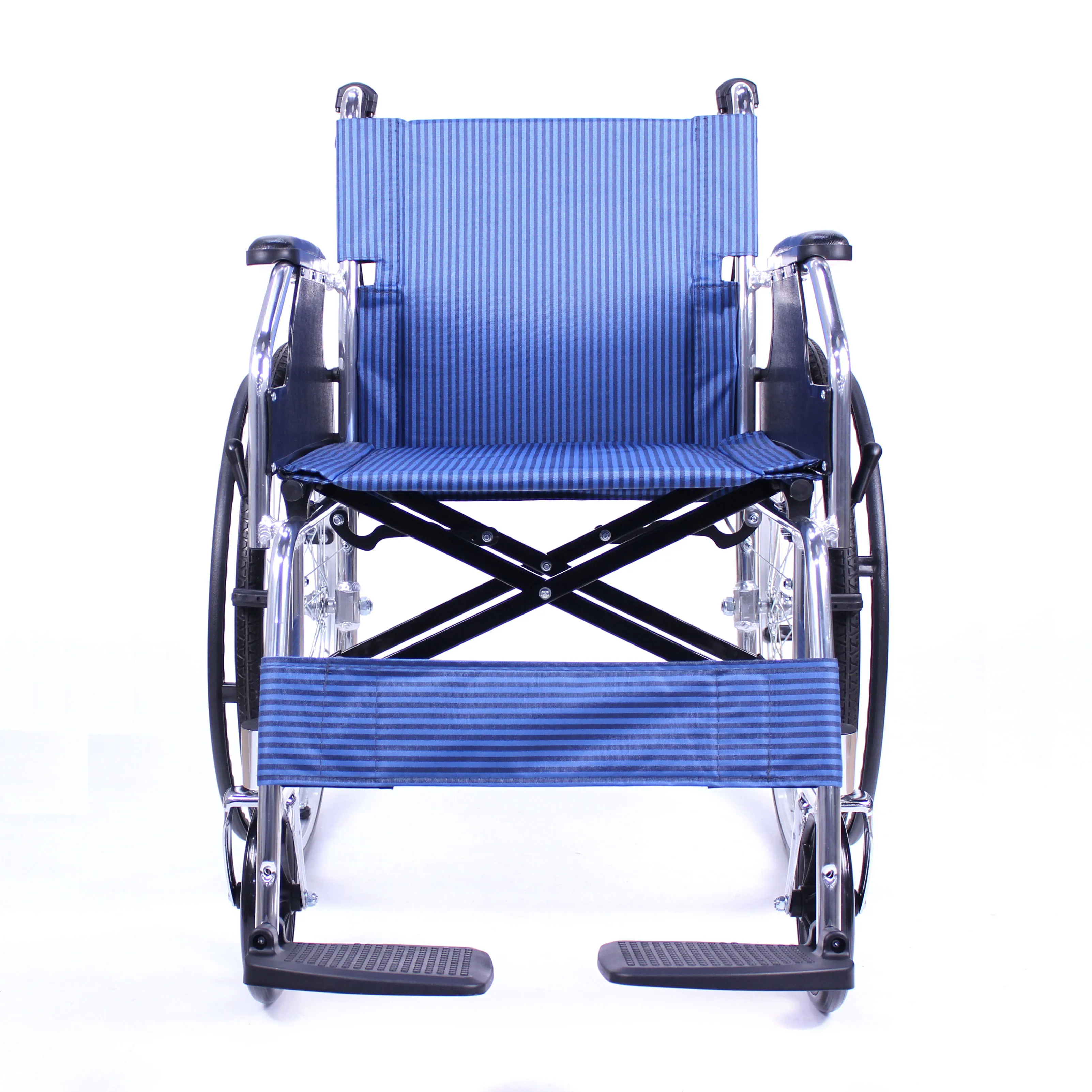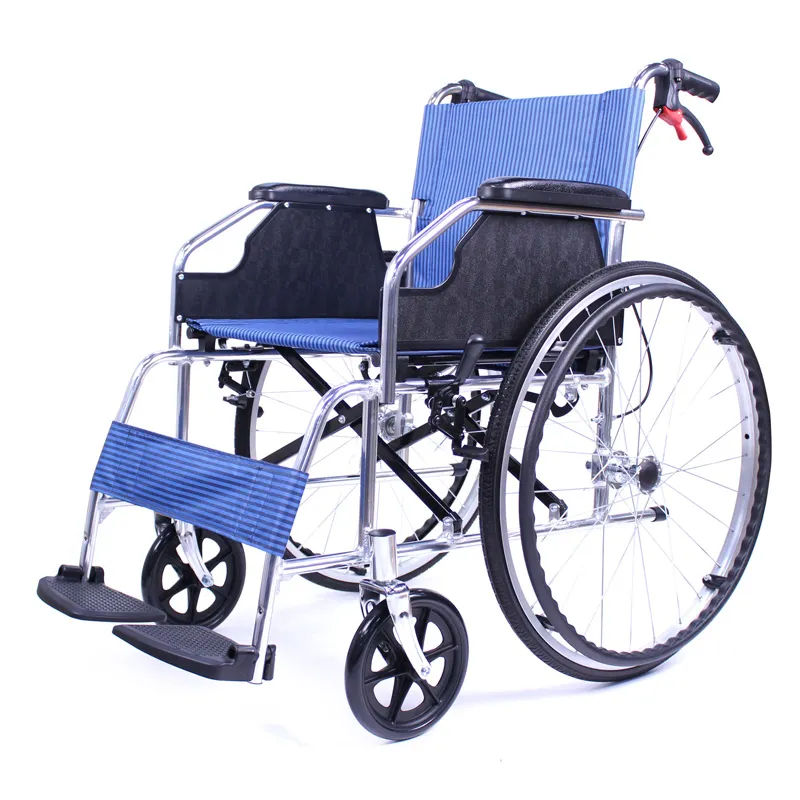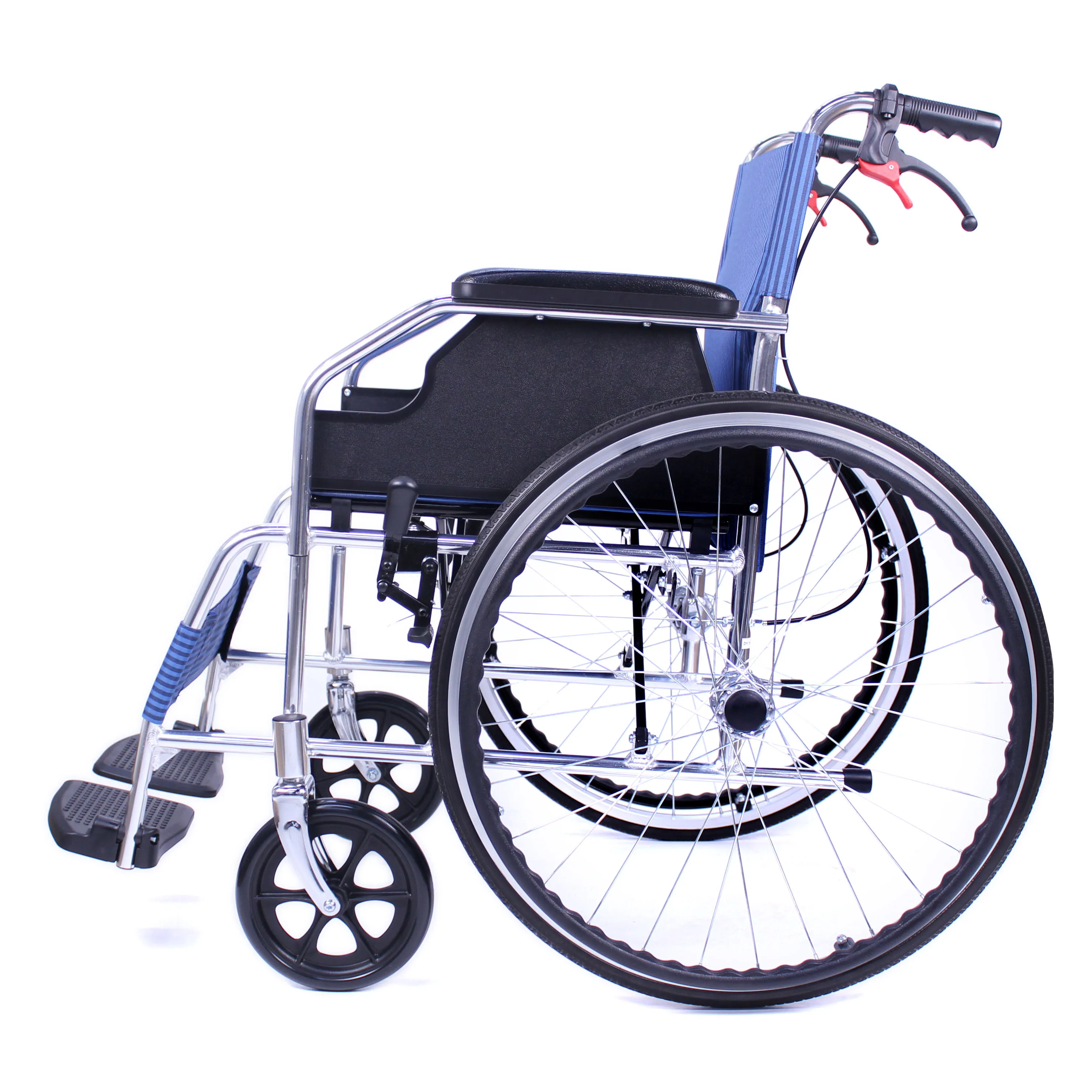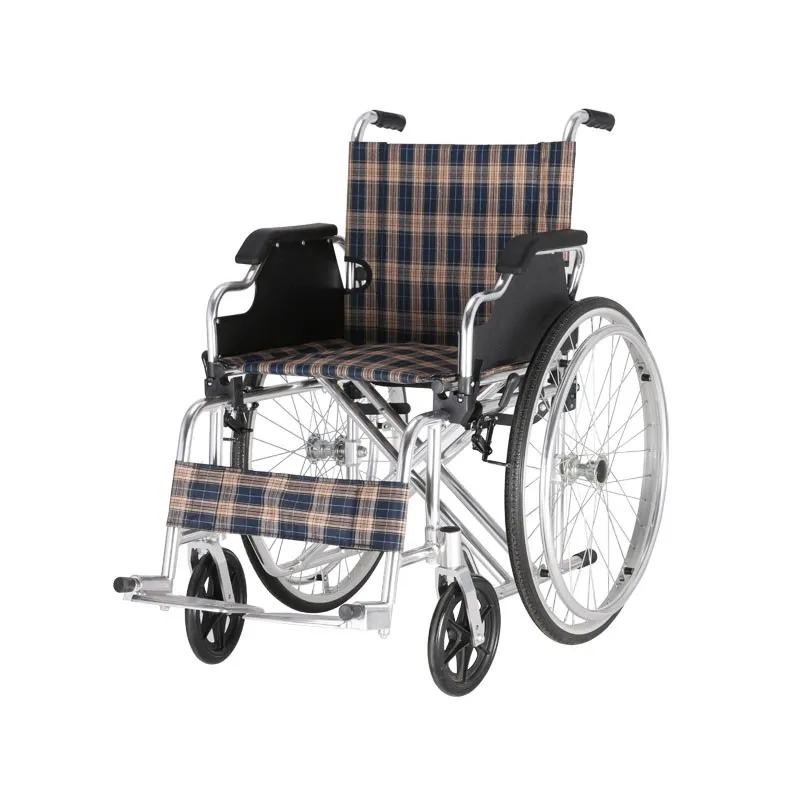In the fields of rehabilitation medicine and assisted mobility, wheelchairs are widely used as assistive devices for the daily lives of the elderly, those with limited mobility, and those undergoing surgery.
However, in practice, many consumers have misunderstandings about the names, functions, and application scenarios of different wheelchair types. The question of "what is a self-propelled wheelchair called" is a frequently asked question during the purchasing process.
This article will provide an in-depth analysis of this issue, focusing on the definition of a "self-propelled wheelchair," its relationship to a "manual wheelchair," and how it differs from a "transport wheelchair." This will help consumers, medical professionals, and caregivers more accurately understand and choose the appropriate wheelchair type.

What is a self-propelled wheelchair?
A "self-propelled wheelchair" is a wheelchair equipped with large-diameter rear wheels that are propelled by the occupant's hands gripping the wheel rims. This type of wheelchair typically has the following core features:
· Large rear wheels (usually around 24 inches);
· Manual propulsion rims for user-controlled propulsion;
· User-controlled braking system;
· Relatively stable structure, suitable for both indoor and outdoor use;
· Many are foldable and have adjustable footrests and armrests for increased portability and comfort.
Thus, the so-called "self-propelled wheelchair" is essentially what we commonly call a "manual wheelchair."
✅ Terminology Comparison:
English name | Description |
| Self-propelled wheelchair | A wheelchair that is propelled by the user's hands |
| Manual wheelchair | A general term for wheelchairs that are not powered by an electrical system, with self-propelled wheelchairs being a subcategory |
| Transport wheelchair | A wheelchair that requires a person to push it; the user cannot move independently |

Are self-propelled wheelchairs manual wheelchairs?
Yes, self-propelled wheelchairs are a type of manual wheelchair. However, it's important to note that "manual wheelchair" is a broader term encompassing all wheelchairs that don't rely on electricity or automated systems for propulsion. This includes both "self-propelled wheelchairs" that can be propelled independently by the user and "transport wheelchairs" that rely entirely on a caregiver's help.
✅ The classification logic is as follows:
Type | Description | Drive method | Self-promoting? |
| Self-propelled manual wheelchair | User pushes the rear wheel with a hand wheel rim | User | ✅ Yes |
| Non-self-propelled manual wheelchair (transport wheelchair) | Caregiver pushes, rear wheel small | Others | ❌ No |
| Electric wheelchair | Motor-driven, no manual operation required | Electricity | ❌ No |
Therefore, it can be clearly stated that a self-propelled wheelchair is a type of manual wheelchair, but not all manual wheelchairs are self-propelled.
What are the core components of a self-propelled wheelchair?
The ability of a self-propelled wheelchair to be independently propelled by the user is closely related to its structural design. The following explains its specialized construction from the perspective of key components.
1. Large Rear Wheels
· Typically 24 inches;
· Equipped with a push rim (or hand rim), which the user grips and rotates to propel the wheelchair;
· Tires are typically made of solid rubber, polyurethane, or pneumatic wheels to adapt to varying surface conditions;
· The rear wheels are slightly offset to improve center of gravity stability and reduce the risk of rollover.
2. Hand Rim Drive System
· Mounted on the outside of the rear wheel, separate from the tire;
· Mostly made of aluminum alloy or stainless steel;
· Textured or rubberized surface for enhanced grip;
· The user controls direction and speed by pushing and pulling the hand rim.
3. Brakes
·Located next to the rear wheel;
· Easily accessible when the user is seated, used for parking or securing the wheelchair;
· Some models offer dual brakes for outdoor use on slopes or difficult terrain.
4. Adjustable Configurations
· Fold-up armrests, replaceable seat cushions, and removable footrests;
· High-end models offer adjustable backrest angles;
· Some are equipped with anti-roll bars for enhanced safety.

Self-propelled wheelchairs and transport wheelchairs: What's the difference?
Many users confuse "manual wheelchairs" with "transport wheelchairs." In reality, there are fundamental differences between the two in terms of structure, function, intended audience, and usage scenarios.
✅ Structure Comparison
Items | Self-propelled wheelchair | Transport wheelchair |
| Rear wheel size | Large (22–24 inches) | Small (8–12 inches) |
| Whether it has a hand rim | Yes | No |
| Self-propelling function | Yes | None |
| Brake operation rights | User-operable | Caregiver controls only |
| Weight | Relatively heavy | Lighter |
| Folding portability | Average | Stronger |
✅ User Comparison
User Type | Suitable for self-propelled wheelchairs | Wheelchair-friendly transport |
| Those with upper limb strength | ✅ Very suitable | ❌ Not recommended |
| Short-distance travelers | ✅ | ✅ |
| Completely paralyzed | ❌ Not suitable | ✅ Suitable |
| Medical caregivers | ✅ or ❌ | ✅ Best suited |
✅ Application Comparison
Scenario | Recommended Types |
| Users going out independently | Self-propelled wheelchairs |
| Healthcare staff sending patient checkups | Transport wheelchairs |
| Long-term home care | Self-propelled wheelchairs (for users with partial autonomy) |
| Short-distance travel to shopping malls/airports | Transport wheelchairs |
What are the advantages and disadvantages of self-propelled wheelchairs?
✅ Advantages of Self-propelled Wheelchairs
· Strong autonomy: Users can independently control their pace and direction of travel;
· Mental health: Enhances a sense of independence, boosts confidence, and enhances a sense of participation;
· Highly adaptable: Suitable for a variety of settings, including homes, streets, and hospitals;
· Large modification space: Suitable for adding assistive devices such as backrest support and air cushions.
⚠️ Limitations of Self-Propelled Wheelchairs
· Upper limb strength requirements: Not suitable for those with limited hand strength or joint problems.
· Terrain sensitivity: Extra caution is required when using on steep slopes or uneven surfaces.
· Heavier weight: Some wheelchairs with high-strength structures are heavier and less portable than transport wheelchairs.
· Slightly higher price: Some high-configuration models cost more than ordinary transport wheelchairs.
Are transport wheelchairs suitable for self-propelling?
The answer is no! Transport wheelchairs are not suitable for self-propelling. They are designed to be "propelled by others," not driven by the user:
· No hand loops: The user cannot directly operate the rear wheels manually.
· Small rear wheels: The wheel diameter is insufficient for effective propulsion.
· Thin and lightweight: Optimized for portability, they lack self-propelled stability.
Despite their low price, compact size, and portability, transport wheelchairs lack self-propelling capabilities and are more suitable as temporary assistive devices.

Understanding the Nature of Self-Propelled Wheelchairs - Conclusion
A self-propelled wheelchair is a manual wheelchair with user-driven propulsion. Its most significant feature is its large-diameter rear wheels and manual hand grips, allowing the user to control the wheelchair's movement with their own hand strength.
A transport wheelchair, on the other hand, is a manual wheelchair that is not self-propelled and relies entirely on a caregiver to propel it. It is not suitable for people who need to travel independently. The two differ significantly in their purpose, structure, and user experience.
Therefore, when people ask, "What is a self-propelled wheelchair called?" the correct answer is: a self-propelled wheelchair is a manual wheelchair with self-propelled propulsion. The essential difference lies in whether it is equipped with large rear wheels and powered hand grips.
Who is Guangdong Dayang Medical Technology Co., Ltd.?
Dayang Medical founded in 2009, is a leading medical equipment manufacturer and supplier based in Foshan, the heart of the Guangdong-Hong Kong-Macao Greater Bay Area, China. Our factory specializes in the design, production, and wholesale supply of electric wheelchairs, manual wheelchairs, sports wheelchairs, hospital beds, commodes, walking aids, shower chairs, and canes.
If you are looking for a trusted wheelchair supplier or hospital bed manufacturer in China, Dayang Medical offers competitive quotes and wholesale purchasing opportunities.










